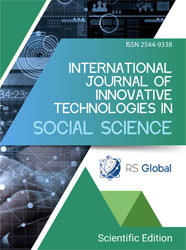LESCH – NYHAN SYNDROME (LNS) - THE REVIEW
Abstract
Lesch-Nyhan syndrome (LNS) is a rare X-linked disorder caused by mutations in the HPRT1 gene, which encodes an important enzyme in the purine salvage pathway. Symptoms of LNS include dystonia, gout, intellectual disability, and self-harm. Although the disease was described in 1964, it remains unclear how abnormalities in hypoxanthine and guanine recycling can lead to such significant neurological deficits. Several studies have proposed different hypotheses regarding the etiology of the disease and various treatment options have been proposed, but none have led to a satisfactory explanation of the pathophysiology of the disease. New technologies such as sequencing, optogenetics, genome editing, and induced pluripotent stem cells may provide a unique opportunity to map the precise sequential pathways from genotype to disease phenotype.
References
Basta, M., & Pandya, A. M. (2025). Genetics, X-Linked Inheritance. W StatPearls. StatPearls Publishing. http://www.ncbi.nlm.nih.gov/books/NBK557383/
Bell, S., Kolobova, I., Crapper, L., & Ernst, C. (2016). Lesch-Nyhan Syndrome: Models, Theories, and Therapies. Molecular Syndromology, 7(6), 302–311. https://doi.org/10.1159/000449296
Bell, S., McCarty, V., Peng, H., Jefri, M., Hettige, N., Antonyan, L., Crapper, L., O’Leary, L. A., Zhang, X., Zhang, Y., Wu, H., Sutcliffe, D., Kolobova, I., Rosenberger, T. A., Moquin, L., Gratton, A., Popic, J., Gantois, I., Stumpf, P. S., … Ernst, C. (2021). Lesch-Nyhan disease causes impaired energy metabolism and reduced developmental potential in midbrain dopaminergic cells. Stem Cell Reports, 16(7), 1749–1762. https://doi.org/10.1016/j.stemcr.2021.06.003
Fang, H.-H., Lee, C.-L., Chen, H.-J., Chuang, C.-K., Chiu, H.-C., Chang, Y.-H., Tu, Y.-R., Lo, Y.-T., Lin, H.-Y., & Lin, S.-P. (2024). Whole Exome Sequencing Facilitates Early Diagnosis of Lesch-Nyhan Syndrome: A Case Series. Diagnostics (Basel, Switzerland), 14(24), 2809. https://doi.org/10.3390/diagnostics14242809
Jathar, P., Panse, A. M., Jathar, M., & Gawali, P. N. (2016). Lesch-Nyhan Syndrome: Disorder of Self-mutilating Behavior. International Journal of Clinical Pediatric Dentistry, 9(2), 139–142. https://doi.org/10.5005/jp-journals-10005-1350
Krajewski, O., Opiełka, M., Urbanowicz, K., Chojnowski, K., Kochany, P., Pawłowski, K., Tomaszewska, J., Peters, G. J., Smoleński, R. T., & Bełdzińska, M. M.-. (2024). Management of neurological symptoms in Lesch-Nyhan disease: A systematic review. Neuroscience and Biobehavioral Reviews, 165, 105847. https://doi.org/10.1016/j.neubiorev.2024.105847
Laróvere, L. E., Fairbanks, L. D., Jinnah, H. A., Guelbert, N. B., Escuredo, E., Becerra, A., & Kremer, R. D. D. (2021). Lesch-Nyhan Disease and Its Variants: Phenotypic and Mutation Spectrum of Hypoxanthine-Guanine Phosphoribosyltransferase Deficiency in Argentine Patients. Journal of Inborn Errors of Metabolism and Screening, 9, e20200027. https://doi.org/10.1590/2326-4594-jiems-2020-0027
Menozzi, E., Latorre, A., Balint, B., & Bhatia, K. P. (2019). Dystonia in Handcuffs: A Picture Typical of Lesch-Nyhan Syndrome. Movement Disorders Clinical Practice, 6(7), 612–613. https://doi.org/10.1002/mdc3.12776
Mohapatra, S., & Sahoo, A. J. (2016). Self-injurious Behavior in a Young Child with Lesch-Nyhan Syndrome. Indian Journal of Psychological Medicine, 38(5), 477–479. https://doi.org/10.4103/0253-7176.191389
Park, H. I., Kim, G.-H., & Ahn, K.-M. (2023). Lesch-Nyhan syndrome: A case report. Journal of the Korean Association of Oral and Maxillofacial Surgeons, 49(4), 228–232. https://doi.org/10.5125/jkaoms.2023.49.4.228
Petitgas, C., Seugnet, L., Dulac, A., Matassi, G., Mteyrek, A., Fima, R., Strehaiano, M., Dagorret, J., Chérif-Zahar, B., Marie, S., Ceballos-Picot, I., & Birman, S. (2024). Metabolic and neurobehavioral disturbances induced by purine recycling deficiency in Drosophila. eLife, 12, RP88510. https://doi.org/10.7554/eLife.88510
Views:
38
Downloads:
11
Copyright (c) 2025 Daria Madycka, Weronika Skrzypek, Małgorzata Słaboń, Karol Stępniak, Wiktor Telega, Kinga Wnuczek, Joanna Wrona, Aleksandra Kaźmierczyk, Jędrzej Kęsik

This work is licensed under a Creative Commons Attribution 4.0 International License.
All articles are published in open-access and licensed under a Creative Commons Attribution 4.0 International License (CC BY 4.0). Hence, authors retain copyright to the content of the articles.
CC BY 4.0 License allows content to be copied, adapted, displayed, distributed, re-published or otherwise re-used for any purpose including for adaptation and commercial use provided the content is attributed.















